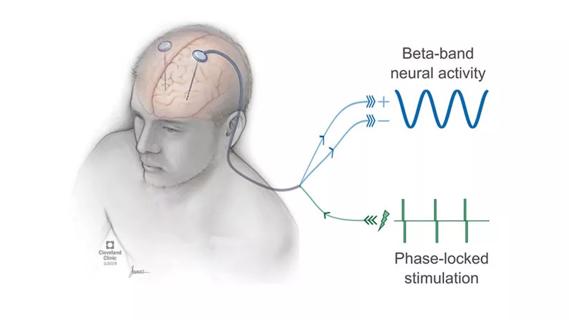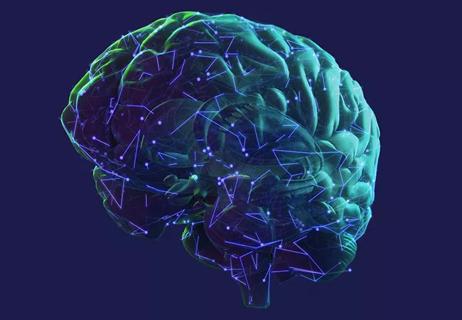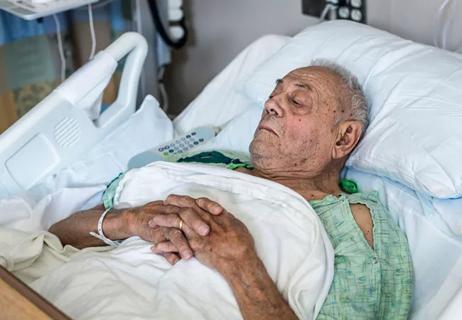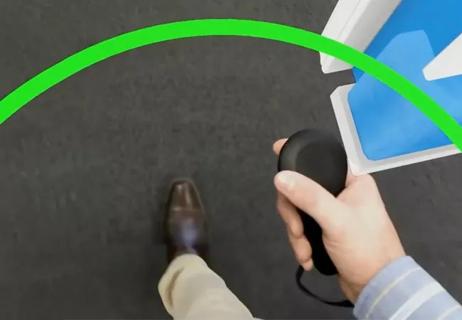Directionality and sensing capabilities combine to optimize and personalize therapy

Cleveland Clinic implanted its first patient with the new SenSightTM Directional Lead System (Medtronic) recently approved by the FDA for use in deep brain stimulation (DBS) for Parkinson’s disease (PD), essential tremor, dystonia and medically refractory epilepsy. It is the first DBS system that combines directionality with sensing capabilities, enabling personalized therapy optimization.
Cleveland Clinic is a non-profit academic medical center. Advertising on our site helps support our mission. We do not endorse non-Cleveland Clinic products or services. Policy
“The new system allows us to record brain activity in target areas so we can adjust the patient’s stimulation parameters and medications based on data,” says neurologist Benjamin Walter, MD, MBA, Director of Cleveland Clinic’s deep brain stimulation program. “It represents a big leap by enabling us to be much more specific in addressing a patient’s symptoms.”
The patient, a 72-year-old woman with PD and essential tremor, had a directional lead implanted in the ventral intermediate nucleus of the thalamus on one side. During intraprocedural testing of the lead, her tremor resolved with stimulation. Two weeks later, the pulse generator containing the sensing technology was implanted, and wires were attached. The patient has now had her device turned on and programmed, and she is doing well, with good symptom control.
The SenSight system is the first to combine the following two features into a single system:
The highly sensitive sensing system detects brain signals — known as local field potentials — that are a million times smaller than the DBS stimulation pulses. Dr. Walter notes that the ability to continuously monitor the patient’s brain activity provides a wealth of potentially useful information on how it correlates with medication schedule, activities of daily living, symptoms and side effects.
“Controlling symptoms of Parkinson’s disease is always a balancing act, and this new system will improve our ability to hit that ‘sweet spot,’” he says. “Because we can apply therapy in a better-informed and more targeted manner, we can use less stimulation and thereby optimize benefit, reduce side effects and extend battery life.”
The system is safe for 1.5T and 3T MRI under conditions specified by the manufacturer.
Although sensing and directional technology have each been on the market for some time already, this new product is the first to combine them into a single system. These capabilities are rapidly advancing. While the new lead system depends on manual adjustments of DBS settings, Dr. Walter expects that in the near future, “closed loop” stimulation capabilities will be incorporated into available DBS technology. In these systems, stimulation parameters will be controlled by the device itself depending on sensing information and according to preset thresholds, similar to the way many cardiac and insulin pump devices work.
Recently introduced to the market is the ability to program stimulation parameters remotely, using cloud- and Bluetooth-based technology. This feature is available with the NeuroSphereTM Virtual Clinic (Abbott), which was approved by the FDA in March. Soon after, Cleveland Clinic implemented this technology for the first time in a patient with PD. “It enables us to change treatment settings at any time, which is a huge benefit, especially for patients who live far away,” says Dr. Walter.
Another technological advance involves the pulse generator batteries. Most commonly used is a primary cell (or fixed-life) battery, which needs replacing surgically every three to five years. More recently available rechargeable batteries have the advantages of being smaller and more durable — lasting 10 to 15 years — but they must be recharged weekly by the patient. While the SenSight system employs a primary cell battery (which, according to the company, lasts over five years), Dr. Walter expects a rechargeable option to be available before long.
In the rapidly changing DBS technology landscape, which patients are the best candidates for the available options? For rechargeable versus primary cell batteries, Dr. Walter says rechargeable is often a better option for younger patients, who grew up with good phone-charging habits and don’t want to face repeat surgeries every few years over a longer lifetime.
“Otherwise, defining the best patient fit for all the new technologies is something we’re all trying to figure out, physicians and patients alike,” he says. “With time and experience, the DBS community is likely to reach consensus on which characteristics best fit individual needs.”
Image at top courtesy of Medtronic.

Research project will leverage insights into neural circuits to advance DBS technology

Randomized trial demonstrates noninferiority to therapist-led training

Study reveals heavy care burden, missed opportunities in patients with uncontrolled symptoms on oral therapy

Also will assess ability of high-intensity exercise to offset the cognitive decline

Maintaining patients' home medication regimens looms large, study suggests

Recently launched first-of-kind study aims to address an unmet therapeutic need

Novel protocol combines gait testing during stimulation with neural signal measurement

Specialists in movement disorders, palliative care and social work join together to improve quality of life